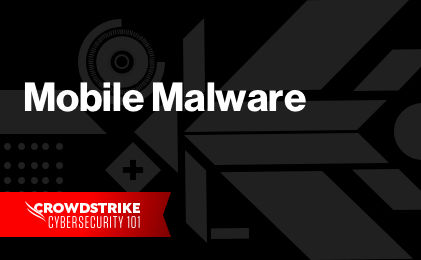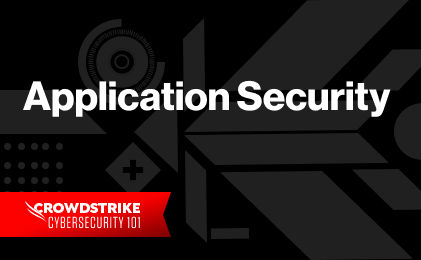Mobile devices have become ubiquitous, enabling users to combine personal activities and professional productivity in a single, portable device. But smaller screens can often bring big risks. Organizations need to protect the smartphones and tablets of their mobile workforce from cyber threats that can steal or compromise data. To do so, they are turning to mobile threat defense (MTD).
With the recent uptick of “bring your own device” (BYOD) arrangements in modern work environments, the risk of exposing company data is higher than ever. Personal devices often lack the security measures of corporate ones. This makes them vulnerable targets for cyberattacks.
In this post, we’ll break down what MTD involves, looking at the kinds of threats out there and discussing how to effectively defend against them. Finally, we’ll introduce CrowdStrike Falcon® for Mobile, a solution that tackles these challenges head-on.
Let’s start by exploring the landscape.
2023 Threat Hunting Report
In the 2023 Threat Hunting Report, CrowdStrike’s Counter Adversary Operations team exposes the latest adversary tradecraft and provides knowledge and insights to help stop breaches.
Download NowThe evolving landscape of mobile threats
The threats to our mobile devices are getting more complex by the day. For many people, mobile devices are integral to their personal and professional lives. As such, these devices are attractive targets for cybercriminals. BYOD policies have amplified these risks, exposing corporate networks to a range of mobile-specific threats.
As new technologies emerge and user behaviors change, the threat landscape evolves. Attackers are quick to exploit any vulnerability they can, so it’s crucial to stay ahead of the curve. Some of the most common types of mobile device threats and vulnerabilities include:
- Phishing attacks: Often in the form of links or attachments in emails, texts, or social media messages, these deceptive attacks attempt to trick users into revealing sensitive information.
- Malware: Malicious software designed to damage, disrupt, or gain unauthorized access to a device.
- Ransomware: A type of malware that locks users out of their devices or data until a ransom is paid.Unsecured Wi-Fi networks: Using public or unsecured Wi-Fi networks can expose mobile devices to interception and data theft.
- App-based threats: Malicious or compromised applications installed on a mobile device can exploit personal and corporate data.
- Jailbreaking or rootkit risks: Altering a device’s operating system can remove built-in security features, making it more vulnerable to attacks.
The real-world implications of mobile security breaches are just as significant as those of an internal network breach. These breaches can lead to data loss, financial theft, or severe damage to a company’s reputation. Breaches can disrupt business operations and even have legal consequences.
Understanding these threats is the first step in building an effective defense. Next, let’s explore the key components that make up effective MTD.
Key components of effective mobile threat defense
What does it take to really protect our mobile devices? MTD isn’t just one thing — it’s a bunch of important components working together to address different aspects of mobile security.
The first key component of MTD is real-time threat detection. MTD constantly monitors devices for signs of malicious activity, responding immediately when something suspicious is detected. This aspect isn’t just about finding threats; it’s about finding them as they happen.
Equally important is automated response and remediation. When a threat is detected, an MTD tool will alert the user or IT team and also take steps to contain and neutralize the threat automatically. This automation is vital, especially in large organizations where a manual response to every alert is impractical.
Finally, an effective MTD approach should provide your organization with comprehensive visibility and control. This means having a clear view of everything happening on a mobile device and the ability to manage it effectively. This component gives you a clear and complete understanding of a device’s security posture — what apps are installed and how they’re being used. MTD should enable you to enforce security policies remotely. This level of control helps in identifying and mitigating risks before they become serious threats.
Challenges in mobile threat defense
Implementing MTD might sound straightforward, but it’s not without its challenges. One of the primary hurdles is the need to balance security with user privacy. In a world where personal and professional boundaries are increasingly blurred, how does your organization ensure robust security without infringing on the personal privacy of your employees? This is a delicate balance to strike. Users are often wary — and reasonably so — of corporate oversight on their personal devices, so it’d essential for your MTD solution to respect privacy while maintaining security.
Another challenge for MTD concerns managing diverse mobile ecosystems. With different operating systems (like iOS and Android), each with its own set of security protocols and vulnerabilities, mobile devices can’t be secured through a one-size-fits-all solution. Therefore, an MTD solution must tailor security measures to ensure consistent protection across different devices and platforms, including mobile device managers.
Lastly, the ideal MTD solution must integrate with existing IT infrastructure, seamlessly working in conjunction with a company’s existing security tech stack. This integration should not only be smooth but scalable.





